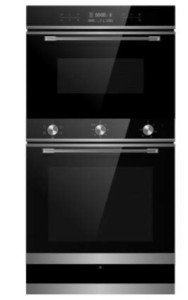7 Things You've Never Known About Built In Electric Cooker
Understanding Built-In Electric Cookers: A Comprehensive Guide
The modern kitchen has actually evolved throughout the years, accepting innovation that intends to streamline cooking while boosting performance. One of the most innovative appliances that have acquired popularity is the built-in electric cooker. This article checks out the functions, advantages, and considerations when selecting built-in electric cookers. It will also attend to typical concerns, providing a comprehensive appearance into their performance and effect on kitchen style.
What is a Built-In Electric Cooker?
A built-in electric cooker is an integrated cooking home appliance designed to fit seamlessly into kitchen cabinets. Unlike freestanding models, these cookers are permanently set up in the kitchen, using a built-in aesthetic. They come in different types, consisting of ovens, hobs, and mix units, and generally use electrical power as the primary heat source.
Kinds Of Built-In Electric Cookers
The classification of built-in electric cookers can be broken down into a number of categories:
Type
Description
Built-In Ovens
Integrated cooking systems utilized for baking, roasting, and so on.
Electric Hobs
Flat cooking surface areas with heating elements for stovetop cooking.
Combi Ovens
Combination systems that work as both a microwave and a traditional oven.
Steam Ovens
Ovens created to cook food with steam, protecting nutrients and tastes.
Advantages of Built-In Electric Cookers
Built-in electric cookers offer a number of advantages that make them a popular choice amongst house owners and culinary enthusiasts alike. Here are some key advantages:
Space Efficiency: Built-in electric cookers save counter space, making them perfect for smaller sized kitchen areas where making the most of space is crucial.
Aesthetic Appeal: These cookers supply a sleek and sleek seek to the kitchen. Their integrated style boosts the overall cabinetry, contributing to a modern-day aesthetic.
Improved Functionality: Many built-in electric cookers included innovative features such as digital controls, self-cleaning options, and clever innovation for remote monitoring.
Boosted Safety: Built-in models often have security functions such as automobile shut-off and kid locks, making them more secure in environments with kids.
Versatility: From stove to induction hobs, built-in electric cookers offer varied cooking options, accommodating various cooking needs.
Factors to consider Before Installing a Built-In Electric Cooker
While built-in electric cookers bring lots of advantages, some considerations must be considered before making a purchase:
Installation Requirements: Built-in cookers frequently need professional setup, which may consist of electrical adjustments.
Cost: These designs normally come at a greater cost point than portable appliances, both for the units themselves and installation.
Restricted Mobility: Once set up, built-in electric cookers can not be easily moved, which can be a drawback for those who might relocate frequently.
Compatibility: Homeowners need to guarantee that their kitchen area supports the specific dimensions and electrical requirements of the cooker.
Installation and Maintenance
Correct installation and maintenance are essential to ensure optimal performance and longevity of built-in electric cookers. Here are some actions and ideas:
Installation Process
Measurement: Measure the designated location in the kitchen to make sure the cooker fits correctly. Consider the height, depth, and width of the device.
Electrical Setup: Check if existing electrical work meets the cooker's power requirements. This might include consultation with an electrical expert.
Ventilation: Ensure the kitchen has appropriate ventilation if the cooker needs it.
Follow Manufacturer Instructions: Always stick to the maker's setup guidelines to prevent service warranty issues.
Maintenance Tips
Regular Cleaning: Keep the cooker clean by immediately cleaning spills and food residues. Click That Link -cleaning choices can likewise be used when readily available.
Inspect Seals and Gaskets: Inspect the door seals routinely to ensure they remain in great condition, preventing heat loss and improving efficiency.
Professional Servicing: Schedule expert maintenance checks to ensure all parts are operating correctly and resolve any concerns.
Frequently Asked Questions (FAQs)
What is the life expectancy of a built-in electric cooker?
The lifespan of built-in electric cookers normally varies from 10 to 15 years, depending upon use and maintenance.
Can a built-in electric cooker be repaired?
Yes, numerous built-in electric cookers can be repaired. Nevertheless, the repair work costs can be significant, so it's important to weigh the expense of repair against replacement.
Are built-in electric cookers energy-efficient?
Built-in electric cookers can be energy-efficient, specifically models with energy-saving features such as induction technology or clever heating elements.
Do built-in electric cookers need specific cabinets?
Yes, built-in cookers require to be set up in cabinets designed to accommodate them, guaranteeing proper ventilation and support.
How do I select the ideal built-in electric cooker for my needs?
Consider your cooking habits, kitchen space, and preferred features. It's beneficial to read reviews and talk to kitchen device experts while making a choice.
Built-in electric cookers represent a blend of performance and sophistication in modern-day kitchen design. They boost the cooking experience while complementing the overall aesthetic of the kitchen. Similar to any significant device investment, understanding the advantages, considerations, and upkeep involved is vital for making an informed choice. By incorporating a built-in electric cooker, property owners can change their cooking adventures and create long lasting impressions in their kitchens.
